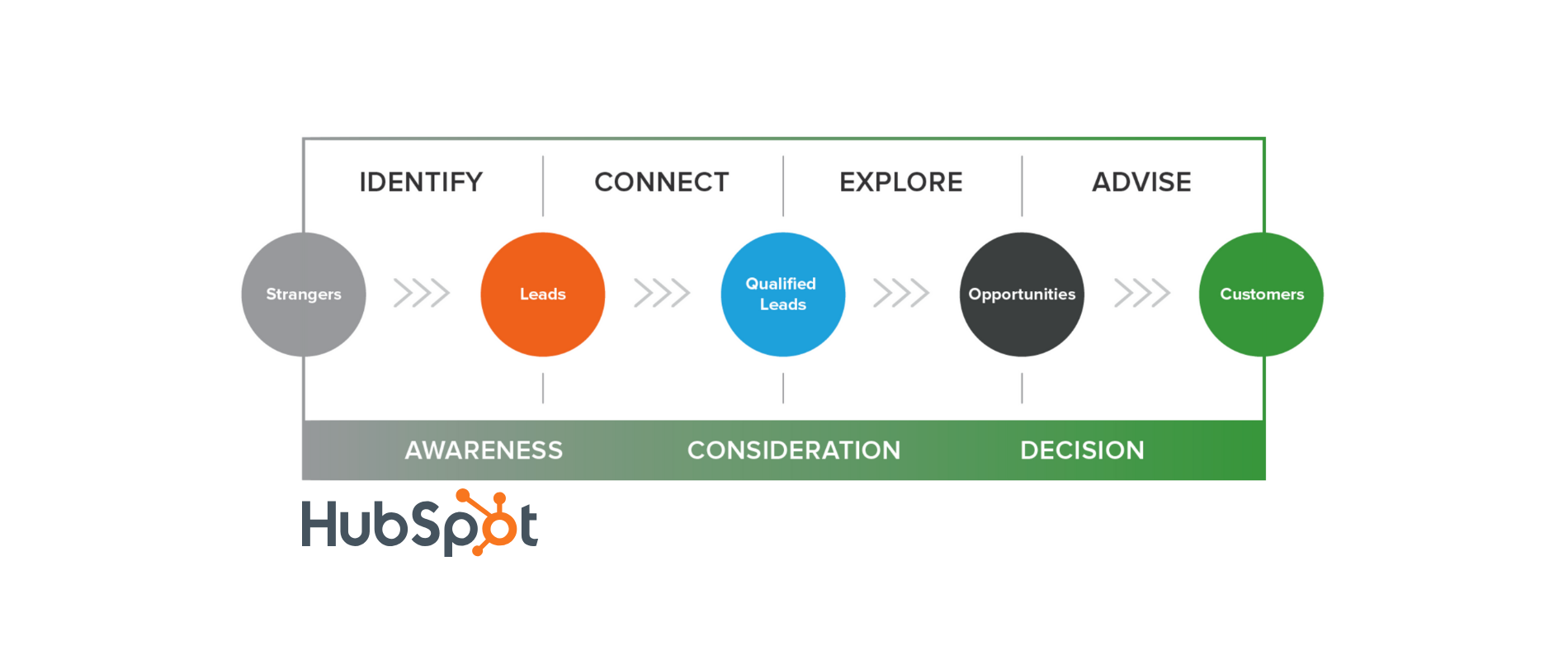
Get weekly
HubSpot updates
The definition of inbound marketing is “A business methodology that attracts customers by creating valuable content and experiences tailored to them” (HubSpot).
Whereas, prospecting is “the process of initiating and developing new business by searching for potential customers, clients, or buyers for your product or service.”
So by their very definition, you can see there are some differences between the two. However, that doesn’t mean that they cannot work hand in hand.
While inbound marketing can be summarised as “build and they will come” the reality is that it takes a little bit more work and aligned strategy for this to truly happen. By using inbound prospecting you will be using the core foundations of inbound marketing’s methodology by having a clear picture of what your “good-fit” customers will look like through the creation of your buyer personas.
These buyer personas will allow you to understand the drivers and pain points of your ideal customers as well as where to find them, what industries to focus on, and be able to solve the challenges they are facing with your product or service.
Download: The Ultimate Guide to Identifying buyer Personas
By blurring the lines between inbound prospecting and marketing, sales and marketing teams are able to work closely together to share insights with one another to drive the business forward and help reach their shared revenue goals. For example, the marketing team may have created a content offer that helps solve one of the frustrations felt by their buyer personas, which they are now busy promoting through paid media strategies, email blasts to their database, and creating blogs to drive traffic to this content offer.
Sounds like they're doing a great job, right?
Now imagine if you were to amplify this promotion through the network of contacts and additional insights from the sales team?
They can now take this content offer and not only reach out to leads they have been working with but they now also have an opportunity to reach out to brand new prospects to say:
“hey, are you suffering from this challenge too?
Here’s a solution we thought you’d be interested in - for free!”.
The inbound sales team can now not only provide a soft opening to a new contact to engage with them and find out more about the challenges their facing, but they can also start a dialog with these contacts which can be fed back to the marketing team to improve and optimise their future content marketing efforts and targeting strategies going forward.
That’s a win, win!
Inbound and outbound prospecting
While traditional outbound sales have relied on hours and hours of “smashing the phones” through cold calling techniques, inbound prospecting is using these communication avenues to explore the potential relationship between their needs and your business through educational content, either by outreaching to prospects, such as through LinkedIn’s InMail or by reaching out to leads in your database who have already shown interest in your brand.
As your inbound marketing strategy grows, so will the number of leads that come through your website and so having a process to determine how best to prioritise and qualify your leads will be vital to your success.
If you haven’t already, look to create a prospect fit matrix that will make it easier for sales to pull out the leads that are worth pursuing, those that should be nurtured through marketing automation and those that are not a good fit. This will help streamline your sales process to ensure the right leads are being contacted at the right time.
The key to contacting a prospect through inbound is to always personalise your message. If they are already in your database take the time to see what content they have engaged with previously, and build on their known pain points so that they know why you have reached out to them.
If you are prospecting new leads, take time to research their business and highlight the typical pains or challenges you know they may have from your buyer persona research to show how the content you are sharing can help them solve what matters most to them - remember to “always be helpful”.
How to inbound prospect successfully
As mentioned above, by making sure you have a clear picture of who you are targeting through detailed buyer personas and prospect fit matrix, you will be able to qualify potential leads quickly to help your sales team to identify the contacts to spend time on and reach out to.
If you are following up leads that have interacted with your content on your website and downloaded a content offer, by using a CRM such as HubSpot, you can see their journey through the website, what pages they visited as well as how they found you - all of which will help your sales team prioritise the leads that are more likely to be sales-ready to which should be left to nurture via the marketing team.
When researching potential prospects, you will be looking for the decision makers or key influencers who you can speak with to introduce your business and provide value to them through content that appeals to their needs and challenges.
When leads come through your website you may first be able to contact every opportunity in a timely manner. However, as your business grows you’ll need to be able to identify the leads that are worth dedicating your time to following up. A lead scoring system or evaluating what content converted them to a lead can help determine whether they are ready to speak to a sales person.
Once you have researched the lead or business you are going to target with your outreach, you’ll want to personalise your message so it resonates with their pain points. One way to do this is to look at their social media accounts or their blog to see what they and their company care about. You can also refer to their website’s “about us” page for further information.
Now you need to actually reach out.
So, what reason do you have to contact them?
Have they read one of your latest blogs or recently downloaded content from your website?
Maybe you have a mutual connection on LinkedIn or you’re both attending the same event. Whatever the reason, be clear why you’re reaching out to them. Provide added value, such as the best way for them get the most out of your content offer, or the best place to get coffee near your shared event. This will give you a way to start your conversation off on the right foot.
Whatever reason you are able to find to make contact, always ensure you sound human, whether written or over the phone, you don’t want to come across like a robot or scripted. Once you start this conversation, do not go into sell mode. This is about building rapport and relationships with each prospect so rather than arranging a follow up call, offer an audit of their current systems or a content offer of value that will push the conversation towards your solution or product, but gives them some immediate insight in return for their time.
At the end of every outreach process, take time to review the conversation, consider if you managed to uncover any challenges, define the goals they have and confirm their need and budget to continue investing time with them.
Streamline prospecting with HubSpot Sales Tools
Prospecting is not a quick task, but there are tools available to help your inbound sales team speed up their processes and keep your records up to date. With HubSpot’s free CRM you can store and track your leads and manage follow up tasks and meetings with ease. However, if you want to take your inbound sales process to the next level, HubSpot’s Sales Pro tools will help you automate your prospecting through sequences and peronalised follow up emails. As well as allowing you to create and optimise your sales templates to speed up your communications on a one to one basis.
Find out more about how you can use HubSpot to close more deals.
Get in touch today to discover how we can help you get the most out of these powerful tools.

